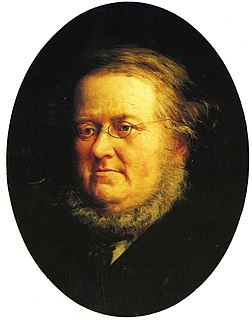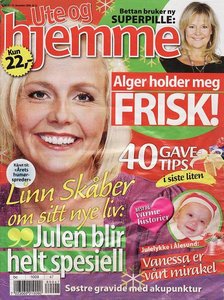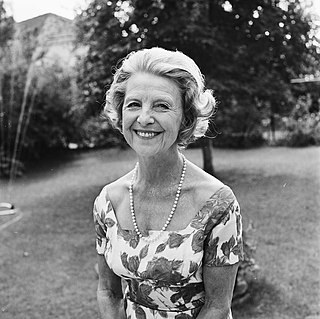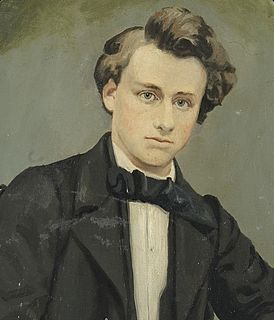
Christian Lassen was a Norwegian-born orientalist and professor of Old Indian language and literature at the University of Bonn.

Nikolaj Frederik Severin Grundtvig, most often referred to as N. F. S. Grundtvig, was a Danish pastor, author, poet, philosopher, historian, teacher and politician. He was one of the most influential people in Danish history, as his philosophy gave rise to a new form of nationalism in the last half of the 19th century. It was steeped in the national literature and supported by deep spirituality.

The Paus family is a Norwegian family that first appeared as members of the elite of 16th-century Oslo. Two brothers from Oslo who both became priests, Hans (1587–1648) and Peder Povelsson Paus (1590–1653), have long been known as the family's earliest certain ancestors. In his book Slekten Paus, genealogist S.H. Finne-Grønn traced the family two further generations back, to Hans Olufsson, a member of the royal clergy in Norway before and after the Reformation, who served as a canon at the royal chapel in Oslo, St Mary's Church, the seat of government of Norway at the time, and who belonged to the high nobility by virtue of his high ecclesiastical and governmental office. The name Paus is known in Oslo since the 14th century, notably as the name of the Lawspeaker of Oslo Nikolas Paus and as the name of one of medieval Oslo's "city farms" that was probably named after the lawspeaker or his family; while a relation between the older and the younger family of the name in Oslo is plausible, it has not been established. Regardless, the modern Paus family is likely the only surviving family to hail from the medieval city of Oslo which burned down in 1624 without being rebuilt, making it the family with the longest documented history in the Norwegian capital.

Peter Christen Asbjørnsen was a Norwegian writer and scholar. He and Jørgen Engebretsen Moe were collectors of Norwegian folklore. They were so closely united in their lives' work that their folk tale collections are commonly mentioned only as "Asbjørnsen and Moe".

Rolf Jacobsen was a Norwegian author.

Ole Paus is a Norwegian troubadour in the Swedish-Norwegian ballad tradition, an author, a poet, and an actor. He is widely considered one of Norway's most popular singer-songwriters. He has been described as the Norwegian counterpart of Bob Dylan and as the "voice of the nation."
Danske Lov is the title of a Danish statute book from 1683, that previously formed the basis for the Danish legislation. Even though it is mainly a compilation of older, regional laws, it took 7 different commissions several decades under two different monarchs to put the Code together. In 1687, Norway received its Norwegian Code, which in form and content is about identical with Danish Code. Danish Code has been translated into English, Latin, German and Russian.
Carl Harald Beyer was a Norwegian literary historian and lecturer, literary critic, textbook writer and professor of European literature at the University of Bergen.

Ute og hjemme was a Norwegian weekly magazine, released by Allers Familie-Journal in January 2008. Its target group was "women and their families 35 years and older". The editor is Lars Gulbrandsen. It soon faced competition from the very similar magazine Ute & Inne, and was discontinued after slightly more than a year.
Guri Tambs-Lyche was a Norwegian activist for international solidarity and women's rights.

Ada Kramm was a Norwegian stage and film actress whose career spanned more than six decades.

Andreas Munch was a Norwegian poet, novelist, playwright and newspaper editor. He was the first person to be granted a poet's pension by the Parliament of Norway.
Naftali Nilsen was a Norwegian newspaper editor and politician for the Labour Party.

The Hartvig Nissen School, informally referred to as Nissen, is a gymnasium in Oslo, Norway. It is located in the neighborhood Uranienborg in the affluent West End borough of Frogner. It is the second oldest gymnasium in Oslo and is widely considered one of the country's most prestigious; its alumni include many famous individuals and two members of the Norwegian royal family.

Bernhard Cathrinus Pauss was a Norwegian theologian, educator, author and humanitarian and missionary leader, who was a major figure in girls' education in Norway in his lifetime.

Anna Henriette "Jette" Pauss, née Anna Henriette Wegner, was a Norwegian teacher, editor and humanitarian and missionary leader.
Haffner og Haagaas was a Norwegian series of textbooks in mathematics published in numerous editions between 1925 and 1979, which were the most widely used textbooks in its field in Norwegian secondary schools for half a century. The series was originally edited by Theodor Haagaas and Einar Haffner, for whom it was named. Theodor Haagaas and Einar Haffner were joint editors from 1925 to Haffner's death in 1935, and Haagaas was sole editor from 1935 to 1959. In 1959, Harald Sogn replaced Haagaas as editor. The last editions were edited by Kjell Gjævenes. The series was originally published by H.J. Haffners Forlag, and was later published by N. W. Damm & Søn. Prior to 1940, some editions appeared under the title Haagaas og Haffner.
Árni Böðvarsson was an Icelandic educator, grammarian, and dictionary editor. He edited the first standard dictionary of Icelandic, co-edited a Russian-Icelandic dictionary, and was also an Esperantist, editor of an Icelandic-Esperanto dictionary, a long-time member of the Universal Esperanto Association (UEA), co-founder of the Reykjavík Esperanto society, and secretary of the Icelandic Esperanto Association.













